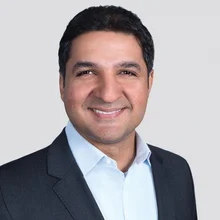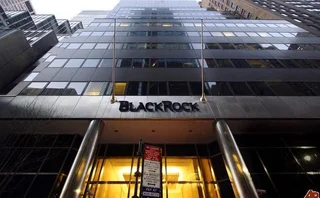
Hedge fund of the year: Hildene Capital Management
Risk Awards 2020: A high-return hedge fund weathers the storm in structured credit

After months of smooth sailing, US structured credit markets hit a spot of turbulence in October and have found the going rough ever since.
Demand for collateralised loan obligations (CLOs) had already fallen with rates, and the worsening economic outlook caused spreads to widen across the rating spectrum, with the riskiest single-B and equity tranches seeing double-digit losses in secondary trading.
Hildene Capital Management saw the storm coming and battened down the hatches in preparation. “We’ve had the view that spreads are too tight for the risk you’re taking and we need to be cautiously positioned,” says co-chief investment officer Dushyant Mehra.
While some funds turned up leverage to compensate for tighter spreads, Hildene stuck to a low-risk diet of short-duration value paper and one-off trades.
“You won’t see us buying CLO mezzanine BBBs or BBs and levering it up,” says Mehra. “One thing we don’t do – and have never done – is buy high dollar price spread risk, get external repo leverage on it, and own it for the carry. We instead look for structural options and event-driven alpha that is less affected by market spread volatility.”
For much of 2019, that restraint weighed on the returns of a firm that has been a rare bright spot for credit hedge funds, with a track record that harkens back to the sector’s heyday.
Its flagship Hildene Opportunities Fund (HOF), with around $2 billion of assets, has delivered annualised returns of more than 20% net to investors since inception in 2008. The firm’s second fund, HOF II, has had returns of more than 13% since it launched in 2011.
That compares with just 4.05% for the benchmark HFRI Fund Weighted Composite Index for the 10 years to the end of October.
This year’s returns have been more muted. HOF and HOF II returned roughly 2.0% and 2.6% respectively through the end of the third quarter, as the firm assumed a more defensive posture.
You won’t see us buying CLO mezzanine BBBs or BBs and levering it up
Dushyant Mehra, Hildene Capital Management
Hildene declined to comment on its return figures, which Risk.net obtained from external sources.
Mehra confirms Hildene has been wary of buying high late in the cycle. He says the willingness of central banks to backstop recessions and prop up asset prices has created a false sense of security and encouraged yield-chasing investors to take bigger risks.
“Spreads have been tight because there’s a lot of demand for spread products,” says Mehra. “We don’t want to be necessarily chasing spread.”
Hildene has made a point of staying off the beaten path at a time when investors are crowding into an ever narrower set of assets and strategies. It is active in some of the least-trafficked and most esoteric corners of the structured credit markets, where only a few others care to venture. Some of its most profitable investments have been in collateralised debt obligations (CDOs) backed by the liabilities of banks and real-estate trusts.

The firm was founded in January 2008 by Brett Jefferson, Hildene’s president and co-chief investment officer. Jefferson was previously a senior portfolio manager at Marathon Asset Management, a New York-based hedge fund. He was joined early on by chief operating officer John Scannell, a lawyer who had previously been a member of the CDO structuring group at Citi.
The firm’s early days were defined by its investments in CDOs backed by trust-preferred securities, or Trups.
Many US banks issued these hybrid securities before the financial crisis. Trups were created by selling preferred stock via an off-balance sheet trust and using the proceeds to acquire the issuer’s subordinated bonds. The interest payments from the bonds were paid out to investors as dividends.
The issuers retained the option to defer those interest payments for at least five years, which allowed them to count the preferred stock as Tier 1 capital.
And while the biggest banks sold Trups directly to investors, smaller regional and community banks pooled theirs into CDOs.
Jefferson first encountered Trups CDOs as a portfolio manager at Marathon in the early 2000s. “There was new issue after new issue; the debt always traded very, very well, and a lot of it was sold to other banks,” he says. “There was a lot of demand for the product.”
That changed during the financial crisis, when hundreds of banks began deferring interest payments on their subordinated bonds, often at the insistence of regulators. Rating agencies treated the deferrals as de facto defaults, spooking investors and triggering a fire sale.
I realised if we could figure out the collateral banks’ names, Hildene would have a huge advantage
Brett Jefferson, Hildene Capital Management
That’s when Jefferson decided to take a closer look. He quickly realised investors had no real sense of the collateral backing Trups CDOs and were selling them indiscriminately.
“The problem was, when I first pulled up a Trups trustee report, the names of the banks weren’t included,” he says. “I realised if we could figure out the collateral banks’ names, Hildene would have a huge advantage.”
That was easier said than done. “The research wasn’t there, so I had to ask myself, how do we get smart on these banks? How do we assess a good bank versus a bad bank?”
Hildene spent the summer of 2008 building a research platform for Trups CDOs. The firm collected trustee reports, converted the data and priced the underlying assets to identify the most oversold structures.
“At the end of the day, we developed our own research infrastructure to determine which banks were going to live and which banks were going to die. It took a long time and a lot of hard work, but once the work was done, we had a huge leg-up,” says Jefferson.
Hildene began buying distressed Trups CDOs in the second half of 2008 and by the following year it was almost entirely focused on this single trade. In 2009, the fund returned 33%; the following year, it was up 35%.
At the end of the day, we developed our own research infrastructure to determine which banks were going to live and which banks were going to die
Brett Jefferson, Hildene Capital Management
Hildene closed HOF after it reached $350 million in early 2011 to avoid diluting returns. The firm launched its second fund in August of that year.
HOF has since grown to approximately $2 billion, while HOF II is approaching $800 million in assets.
But in 2016, Hildene found itself at a crossroads. The Trups trade delivered for investors and also made the firm’s employees wealthy. One of its portfolio managers, Mike Nichol, was ready to retire. Scott Farrell, who had joined Hildene as a portfolio manager in 2012, left at the end of 2016 to start his own firm. Jefferson went back to the drawing board.
“I faced a decision about how I wanted to run the firm going forward, and I knew I wanted to do it differently,” he says.
Jefferson brought in Mehra as a portfolio manager in April 2016, shortly before Nichol and Farrell left the firm. Mehra joined from Pine River Capital Management, a once high-flying hedge fund that hit a rough patch around that time.
Mehra was promoted to co-chief investment officer in May 2018 and has worked to expand the firm’s investment mandate. He is deeply involved in all investment decisions across the firm, alongside Jefferson.
Diversity is key
The firm’s second fund, HOF II, has a broad mandate to invest in all forms of structured credit, including CLOs, CDOs and various other asset-backed securities (ABS).
It is known for making eclectic investments. When the US Treasury began auctioning off stock warrants it received from banks under the crisis-era Troubled Asset Relief Program, Hildene was one of the early buyers. It has also invested in Trups CDOs backed by the debt of real-estate investment trusts (REITs) and so-called Re-Remics, which stands for re-securitisations of real-estate mortgage investment conduits.
The fund’s investments in CLOs, which have accounted for as much as 50% of its holdings at various times, are worth a closer look. Hildene focuses primarily on the excess spread and optionality in CLO structures.
Excess spread is the difference between the interest earned on the CLO’s loan assets and the amount owed to debtholders. The optionality arises from the CLO manager’s ability to refinance or reset the structure to lower debt costs and extend maturities.
The firm looks beyond the widely quoted metric of CLO equity NAV, which Mehra believes to be flawed. “CLO equity NAV is less relevant given it is difficult to access today,” says Mehra. “Instead, we focus on excess spread and look at all other metrics as optionality.”
When rates were at rock-bottom, this approach led Hildene to snap up pre-crisis CLOs where the option to refinance was massively undervalued. As rates began to rally in 2017, the firm moved into 2013 and 2014 vintage CLOs that could be reset to extend maturities and reinvestment periods. Last year, as spreads began tightening again, Hildene bought new issues with the lowest debt costs.
The high cash-on-cash strategy allows us to play offense when spreads are widening out
Dushyant Mehra, Hildene Capital Management
More recently, CLOs have been buffeted by dispersion in loan pricing. Higher-rated issuers have rallied, while weaker companies have seen more distress. In some cases, loan prices have dropped from near par to below 40 cents on the dollar.
Mehra says declining liquidity is to blame for some of the wild swings in loan prices. “Liquidity in the CLO market has suffered over the past few years as dealers pulled back from the secondary markets,” he says. “At the same time, the supply side of the equation has not changed and new issue CLOs continue to chug along at a pretty healthy clip.”
Hildene has responded by shifting into more short-duration, high cashflow-generating trades. “The fund is always generating intrinsic liquidity that can be redeployed into the widest spreads available. In periods of market stress, we are happy to take spread risk as you are getting paid to provide liquidity,” says Mehra. “The high cash-on-cash strategy allows us to play offense when spreads are widening out.”
While HOF has closed to new investors in the past and has limited capacity today, Jefferson reckons the Trups CDO trade still has 8–10 years to run. These were typically structured as 30-year deals, meaning most pre-crisis issues will mature sometime in the 2030s.
And though recent rate cuts have caused returns to level off, Jefferson remains bullish on the trade. “The banking sector as a whole is more regulated and better capitalised than it has been in a very long time. From a fundamental standpoint, we still like bank credit risk,” he says. “From a technical standpoint, interest rate cuts have led to compressed returns. The way we see it, we have 10 years left to be profitable on this trade, and we’re going to make that back up.”
Only users who have a paid subscription or are part of a corporate subscription are able to print or copy content.
To access these options, along with all other subscription benefits, please contact info@risk.net or view our subscription options here: http://subscriptions.risk.net/subscribe
You are currently unable to print this content. Please contact info@risk.net to find out more.
You are currently unable to copy this content. Please contact info@risk.net to find out more.
Copyright Infopro Digital Limited. All rights reserved.
As outlined in our terms and conditions, https://www.infopro-digital.com/terms-and-conditions/subscriptions/ (point 2.4), printing is limited to a single copy.
If you would like to purchase additional rights please email info@risk.net
Copyright Infopro Digital Limited. All rights reserved.
You may share this content using our article tools. As outlined in our terms and conditions, https://www.infopro-digital.com/terms-and-conditions/subscriptions/ (clause 2.4), an Authorised User may only make one copy of the materials for their own personal use. You must also comply with the restrictions in clause 2.5.
If you would like to purchase additional rights please email info@risk.net
More on Investing
How investment firms are innovating with quantum technology
Banks and asset managers should be proactive in adopting quantum-safe strategies
Top 10 investment risks for 2026
AI, strained governments, inflated private assets: risky bets have become hard to avoid
Review of 2025: It’s the end of the world, and it feels fine
Markets proved resilient as Trump redefined US policies – but questions are piling up about 2026 and beyond
Asset managers prep autocall ETFs with assets tipped to hit $30bn
Actively managed strategies wait in the wings after systematic approach nets Calamos $500m
Citi launches core inflation QIS
Custom indexes eliminate energy and food prices to ease trading of stickier inflation trends
BlackRock appoints Pierre Sarrau as chief risk officer
Current CRO Edward Fishwick will be head of research at BlackRock’s RQA group
Japan’s yen swaps go global
JSCC isn’t just clearing swaps, it is clearing the way for the next stage of Japan’s financial evolution
How Bessent learned to stop worrying and love the T-bill
Short-dated issuance shows no signs of slowing. Some fear it could end badly.







